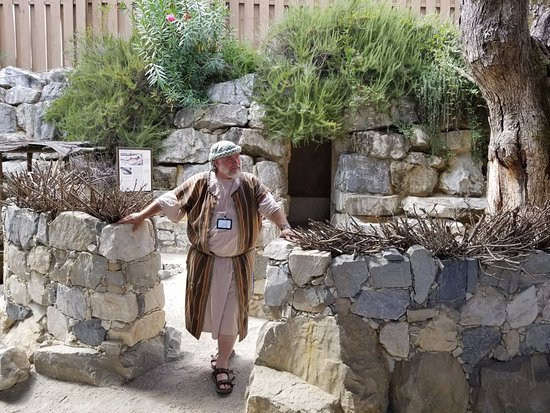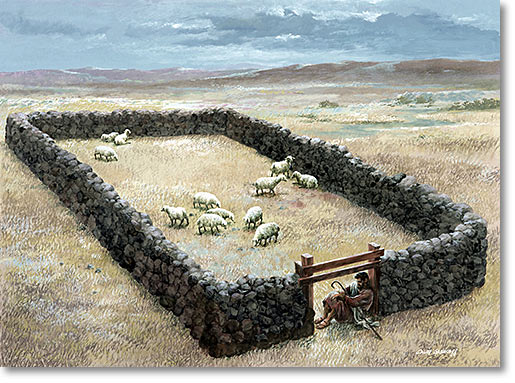The wealth of our Aussie nation was born on the backs of sheep. In the 1880s, the wool business was skyrocketing, lining the pockets of drovers and landowners alike. To become wealthy, investing in sheep was paramount.
Yet, a decade later, Australia slid into a period of economic depression. Many endured abject poverty, and those who sought employment by travelling from one property to another were regularly exploited.
Empty bellies drove some itinerant workers to take what was not theirs.
The iconic song, Waltzing Matilda, imortalises a hungry itinerant worker—a swagman—who steals a sheep.
He is caught with the remains of the Jumbuck (a male sheep) in his swag. The owner along with three police officers attempt to arrest the thief. Rather than the prospect of being locked away in a bleak jail cell, the swagman jumps into a billabong and drowns himself.
Preventing sheep theft
To fortify and protect property, some owners resorted to running barbed wire along the tops of their walls or fences.
During the time of Christ, open-air enclosures for the sheep known as sheepfolds were reinforced in a similar way. However, instead of barbed wire, briars and long thorny vines were strategically grown over the top of walled enclosures.
When the sheep were herded into the sheepfold at night, the sharp and prickly vines acted as a deterrent for any thief attempting to climb over the stonewall enclosure.

True Blindness
Take a moment to read John chapter 9.
It is the Sabbath, and Jesus and his disciples find a blind beggar sitting by the entry to the Temple. Since the time of his birth, the beggar has never seen the smile on his mother’s face, or the blue expanse of the sky, or anything for that matter.
He was born into a world of darkness. He was born blind. Thankfully, the course of the beggar’s life takes a new direction when Jesus steps in to restore his sight. Miracles happen when Jesus is in town.
Through modern eyes, Christ’s application of his saliva mixed with dirt to heal the blind man’s sight seems strange, unhygienic and even primitive. However, our Lord was merely adopting the forms known and used by people of that day.
Saliva was commonly regarded as a remedy for diseases of the eye.
When he had thus spoken, he spat on the ground, and made clay of the spittle, and he anointed the eyes of the blind man with the clay,
And said unto him, Go, wash in the pool of Siloam, (which is by interpretation, Sent.) He went his way therefore, and washed, and came seeing. John 9:6,7
This miracle should have been the cause of great rejoicing, but the religious leaders were suspicious and skeptical of Christ’s claim to be the Messiah, despite his miraculous deeds.
When the blind man testifies that Jesus had healed him, the religious leaders ban the healed man from worshiping in the temple. Excommunication from the synagogue was the punishment for anyone who confessed Jesus as the Son of God.
It was a severe and cruel punishment.
In all aspects, the synagogue was at the heart of Jewish social, political and spiritual life. When the man was cast out, it meant that he was severed from his community of neighbours and friends. In a way, it effectively erased his identity.
Restored Sight
In all this, the blind man becomes a disciple, having received both physical and spiritual sight through placing his faith in the Saviour. He embraces eternal light and eternal life and responds accordingly in worship.
Jesus heard that they had cast him out; and when he had found him, he said unto him, Dost thou believe on the Son of God? He answered and said, Who is he, Lord, that I might believe on him?
And Jesus said unto him, Thou hast both seen him, and it is he that talketh with thee.
And he said, Lord, I believe. And he worshipped him. John 9:35-38
Robbers and Thieves
Reading further in John Chapter 10 we are presented with a few parables. These serve to juxtapose Christ’s leadership against the religious leadership of his day.
Jesus accuses the Pharisees of being thieves and robbers, but they are so spiritually blind that they do not catch Christ’s meaning.
Verily, verily I say unto you, He that entereth not by the door into the sheepfold, but climbeth up some other way, the same is a thief and a robber. John 10:1
But he that entereth in by the door is the shepherd of the sheep. John 10:2
Jesus is the true shepherd in conflict with the false shepherds of his nation.
The Pharisees argue on legal grounds for a criminal charge against Jesus for breaking the Sabbath Law. Making clay and healing was considered work on a day when no work was meant to be done.
The Pharisees act without feeling towards the blind man, and his mother and father. Hence, were unfit for guiding, nurturing and feeding the flock of God.
In stark contrast, Jesus shows compassion and love to the blind man by giving him sight and granting him eternal life.

A True Shepherd
A true shepherd cares for his sheep.
Come nightfall, shepherds would often bring their flock to a sheepfold to allow them to rest in safety. As the sheep entered the enclosure one at a time, the shepherd would drop his rod over the sheep and inspect it for wounds. Once cleared he would allow the sheep to enter.
Thieves and robbers have little concern for the welfare of the sheep except to gain financial advantage using stealth and deception to steal, much like the religious elite. They do not enter through the proper way—through the door.
How was it possible that these Pharisees, Sadducees and other religious leaders gained such esteemed positions amongst God’s people—his sheep?
Christ’s Warning
Even religious systems meant to honour and glorify God may be polluted by corruption from within. Mirroring the secular world, the ambitious take advantage of nepotism (personal and familial ties), and political connections to advance their status.
Jesus is both the shepherd and the door
Then Jesus said unto them again, Verily, verily, I say unto you, I am the door of the sheep. John 10:7
The stone enclosure or sheepfold had no material or wooden door. Where a door would stand there was just an empty open space, the single point of entry and exit. After the shepherd herded his flock into the enclosure, the shepherd would lay his body across the entrance.
The door to the sheepfold was the shepherd himself. No sheep could escape and no predator or enemy could enter except over the shepherd’s own body.
There was no way in or out except through the shepherd who was also the door.
Have you entered eternal life through the door of the sheep?
Bibliography
Image credit : Sheep by Andrea Lightfoot – Unsplash.com
Author unspecified. 2021, ‘What does John 10:10 mean?’ Bible Ref. Retrieved 25 November 2021 from
https://www.bibleref.com/John/10/John-10-10.html
Author unspecified. 2021, ‘Australian agricultural and rural life’, State Library of New South Wales. Retrieved 25 November 2021 from
https://www.sl.nsw.gov.au/stories/australian-agricultural-and-rural-life/australian-wool
Guzik, D. 2018, ‘John 10 – The Good Shepherd’, Enduring Word. Retrieved 25 November from
Pounds, W. 2018, ‘John 10:1-11 I am the Door’, Abide in Christ. Retrieved 25 November 2021 from
http://www.abideinchrist.com/messages/jn10v1.html
Sang, R. 2019, ‘What did Jesus mean when He said, “I am the door of the sheep”?’, Drawing on the Word. Retrieved 25 November 2021 from


